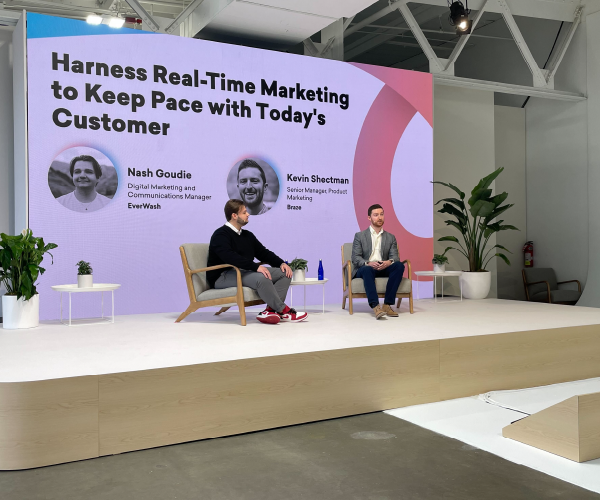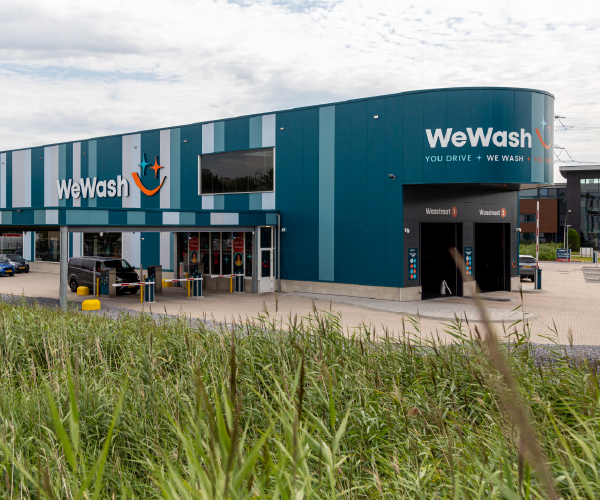
Is It Time to Change Your Strategy?
July 26, 2024
8 minute ReadNo easy way to know the right timing, but there are some clear triggers — and definite red flags if you’re overdue.
A savvy, well-considered business strategy is at the heart of any successful company, but strategies don’t last forever. Industry trends emerge, technology grows more sophisticated, competitors arrive and evolve, the economy plummets and soars, and customers’ behaviors and preferences shift. Through it all, companies of all kinds must continuously evaluate their strategy and its ability to rise to the moment. However, there’s no easy way of knowing when to change strategy and when to stand firm. And, if you do opt to change your strategy, how do you make sure you get it right?
It takes hard work, thorough analysis and creative thinking, experts say.
“This is all art. There’s no science here,” said Chuck Bamford, Ph.D., founder and managing partner of Bamford Associates LLC, a strategy advising firm whose focus is to demystify strategy and make it practical.
Justin Young, vice president of marketing for Arkansas-based Splash Car Wash, said a business strategy serves as a building block for clarity within an organization. Keeping that in mind can help guide decisions surrounding it when a major shift is needed.
“The simplest way to think through your business strategy is to ask, ‘How can we create value for our customers and the company more effectively than our competitors?’” Young said. “Or, stated even simpler, your strategy is how you plan to win.”
Therefore, a change in strategy follows when “it’s clear that we have to operate differently than we used to if we really want to win,” Young said.
Here’s a look at some of the chief considerations to make when weighing this critical decision.
Avoid purposeless change
Bamford said he sometimes hears of businesses that redo their business strategy annually as a matter of practice. He calls it a horrible idea. Employees cannot keep up when strategies change that rapidly, he said, and they struggle to understand – and implement – leadership’s vision when it shifts that frequently.
Particularly when it comes to the aspect of a company’s strategy that covers its competitive advantages in the marketplace, Bamford said a company should “want to hold onto that as long as humanly possible.” Strategies can be refined and improved upon along the way without being overhauled.
“So as long as nothing significant changes, my competitive end should be something that I'm trying to continually refine, get better at, get all my employees to go in the same direction as, but not change,” Bamford said.
When companies change strategy too frequently, employees understand it is only for the short term and never fully engage with it or adopt it, Bamford said.
“It’s even worse for customers,” Bamford said. “All our customers want is consistency. If I’m a customer of X, and they keep changing their focus and keep changing what they're doing I don't ever know what to expect in an interaction with them. So it's a terrible thing to constantly change your strategy.”
Similarly, Young said the wise choice can be to stick to your existing strategy.
“It’s tempting to fall prey to knee-jerk reactions when we shouldn’t,” Young said. “There is much wisdom to know when a change in strategy is mission critical or when it’s best to stay the course.”
Triggers for a change
Young said leaders need to routinely evaluate their organization’s direction and whether they are still traveling on the path of their existing strategy or if they have departed from it. However, he said other factors can “demand a non-routine strategy evaluation.”
Bamford said triggers that can prompt the need for a new strategy include such events as a new competitor, a major technological change introduced to the industry or a transformative external event, such as the COVID-19 pandemic. However, he said operators should still be careful to not simply assume a change is necessary.
“When a disruption occurs, car wash owners should relook at what their advantages are,” Bamford said. “If everything still holds, and they still have those competitive edges, then they should keep the strategy. They should keep rolling on and not change anything. But if it's caused one of those advantages to no longer be an advantage, then it is time for it to go.”
Companies that are reluctant to shift strategy – and who ignore the signs that a change is needed – will fall behind, Bamford said.
“There's a real danger in waiting to change your strategy until the signs are obvious, like your financials have started to drop or your customer count has started to drop,” Bamford said. “By that time, it's too late. You are going to go through a period of real pain.”
Bamford said the rapid growth and evolution that the car wash industry is seeing – what Bamford calls its “velocity” – makes it one in which operators may need to shift strategy more often than in other industries.
In addition, Young notes that different seasons of a company’s life cycle can demand different strategies to “winning” – your strategy as a startup would differ from your strategy as you strive to scale up operations.
For instance, Young said for the past three years, Splash Car Wash has focused on becoming a household name in its home state of Arkansas.
“Our branding and awareness efforts were the focus. Everything we’ve done from a marketing perspective has been done to reinforce our brand in the mind of our customers,” Young said. “But we’re now somewhat established as that household name we wanted to be. What now?”
In response, Splash has held strategy conversations that focus on the growing number of big-chain wash companies opening in the state and what those companies might struggle with. The answer, Young said, is “connection.”
“Team and community connections usually fade with corporate growth, so perhaps, our next season should consist of cementing ourselves into our communities through local involvement,” Young said.
New ownership prompts a fresh look
Jason Ugent purchased Erie Brush and Manufacturing Corp. in Chicago two years ago. The business was a well-known name in the industry, Ugent said, but its operations were “pretty old school” and missing out on opportunities that a more technologically advanced approach could bring.
“Even before purchasing it, I knew that we needed to completely revamp how we go to markets and how we service our customers,” Ugent said.
With the quality of the product already a strength, Ugent believed he could focus a corporate strategy around other aspects of the business – from back office processes to customer engagement.
Ugent said it was important that he did not immediately come in and make big strategic changes. His focus at the outset was to observe the business and make some tactical changes that were “low-hanging fruit” and in clear need of an update without extensive analysis, such as implementing a VoIP phone system and getting a less expensive service plan for the company’s printing needs.
“The rest of the time was observing everything and asking way too many questions,” Ugent said. “I think asking questions is the best thing that anyone can do to learn, making sure that you're communicating all the time that I'm asking this question so that I can learn.”
Eventually, Ugent began to implement more strategic shifts. A major one arose from his belief that Erie Brush needed more brand recognition around some of its products. At the time, the company’s foam wash material was called Gentle Foam, which he believed was insufficiently distinctive. Ugent not only wanted to rebrand the product – he wanted to upgrade it in the process. So, Erie Brush spent a year formulating a new wash material and launched its new product, Dynamo Foam, in January 2024. Similarly, Erie Brush has rehauled its website to better take advantage of ecommerce’s rich potential.
Ugent recommends that leaders seek out lots of advice from mentors, peers and employees before making strategic changes. Third-party consultants or other experts also can be helpful.
“Don’t be afraid to pull in experts,” Ugent said. “A lot of times it’s better to spend money on expert help rather than trying to do it alone. At the same time, pull the plug on that expert help if they’re not matching your culture or expectations. Pull that plug quickly.”
Planning and implementation
A key first step when changing strategy is analyzing your competitors. Bamford recommends creating a spreadsheet with each business listed and then diving into some key questions about them, such as: “What do we think separates us?” “Why did they win business?” “Why are they doing well?” “Why am I doing well?”
“Understand their pricing, understand their positioning, understand their service,” Bamford said.
Then companies should consider what he calls the “orthodox” of its own organization – the table stakes – and an honest assessment that weighs whether the organization is doing those basics at least as well as everyone else. It’s helpful to gather a team to dive into questions surrounding what separates your organization, what makes it unique and why customers give you business.
Bamford said the quality of your analysis is crucial. Typically, people cite competitive advantages that are not competitive advantages, pointing to generic characteristics such as “our people” and “our customer service” without delving into whether those characteristics actually distinguish them from their competitors. Through a resource-based analysis, Bamford said companies can better narrow in on what actually makes them different and why it helps them.
Young said the best strategies he has seen have always begun with a unified vision among an organization’s top executives. “Creating space for your top leaders to collaborate on creating strategy is crucial,” he said.
Young noted that a strategy is just a theory without implementation.
“Successful implementation happens by aligning the top leaders within the company, establishing clear goals and [key performance indicators], creating buy-in and setting expectations for your team, and then monitoring progress,” Young said.
The buy-in to a strategy is nearly as important as the strategy itself, Young said.
“The best leaders know how to take a business strategy and create an internal culture around that strategy,” Young said. “They not only outline the vision and direction, but they communicate it in a compelling way, they reinforce it with systems, and they are content with remaining focused on the plan, even when it feels monotonous.”
When a major revamp is necessary, Ugent said a company’s leaders still must be careful not to disrupt the day-to-day operations of the business or undermine the customer experience and they must keep employees involved – and bought into – the changes.
“Communication is key, as well as inviting employees into the process as you go along,” Ugent said. “As you're implementing new processes or systems, having the employees be a part of that and helping design and shape what those are based on will help that transition.”








